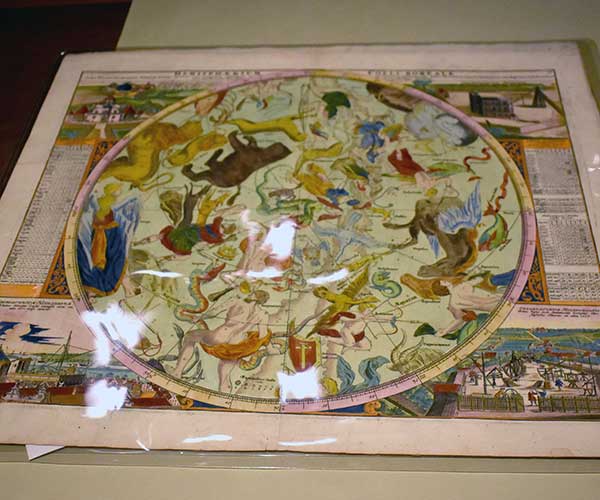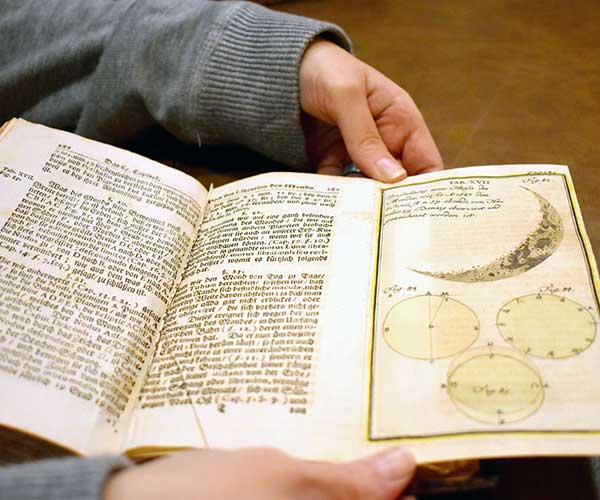
by Library News

A unique donation to UTA Libraries Special Collections will have people looking skyward with the help of new celestial charts and atlases added to its collection. The charts and atlases chronicled early scientific discoveries. They were gifted to the Libraries by Donald Sheff.
Rachel Clark, Metadata Librarian, stated that these items provide a unique window into the past, with the oldest book dating from 1548 and the oldest chart dating from 1660.
“Looking at the pictures, you don't think about how people have been charting the stars for hundreds of years. When people think about astronomy, they think about more recent history with NASA who put the first man on the moon," Rachel said. "So, it is always interesting to find stuff like this and see how far they were along even back then."

This chart was one of several donated to UTA Libraries Special Collections—the oldest chart in the donation dates from 1660.
One example from the collection that shows art and science coming together is the "Sitvs Terræ Circvlis Coelestibvs Circvndatæ" chart from the mid-17th century. The chart shows the (pre-Copernican) Ptolemaic universe, with the earth fixed at the center with the stars represented by a ribbon of zodiac rotating east to west. Several winged figures that carry astronomical and cartographical instruments are also depicted in the chart.
The first traces of Australia ("Nova Hollandia") are shown in the chart, with the northwest coast emerging from the East Indies and joining New Guinea at Cape York.
Rachel encourages people to stop by Special Collections to learn more about the origins of astronomy before the upcoming total solar eclipse that will take place on April 8.

This atlas was one of several donated to UTA Libraries Special Collections. The oldest atlas in this donation dates from 1548.
According to NASA, a total eclipse happens when the moon passes between the sun and the earth, completely blocking the face of the sun. The sky will darken as if it were dawn or dusk. The April 8 eclipse will start at 1:40 p.m. and will last for 2 minutes and 33 seconds. It will cross North America, passing over Mexico, the United States and Canada.
The Fort Worth Star-Telegram reported that this will be the first total solar eclipse visible in Dallas-Fort Worth since 1878 and the last for almost 300 years. The next total solar eclipse visible in North America will occur on Aug. 23, 2044.
Before the eclipse happens, Special Collections plans to have an exhibit with these astronomical materials. The open exhibit will feature historical materials about eclipses on March 26. At 10 a.m. on April 8 in the Central Library’s atrium, Dr. Clifford Cunningham with the History Department will give a talk called “A Total Eclipse of the Heart: How Solar Eclipses Struck Fear and Wonder in the Hearts of People for Thousands of Years.” Along with Dr. Cunningham’s talk, there will be student presentations throughout the morning of the eclipse.
If you have the time, stop by the Special Collections to explore history up close and learn about these scientific discoveries that still have a place in today's world.
Special Collections is on the sixth floor of the UTA Central Library.
Add new comment